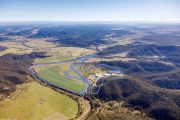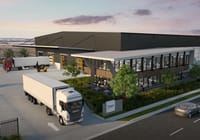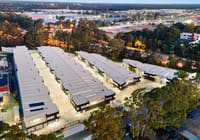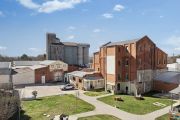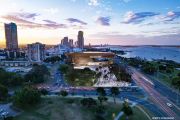
Sydney CBD still a tenant magnet despite severe squeeze in office space
Sydney’s CBD office vacancy rate dropped to 4.5 per cent over the past quarter, with companies now increasing rents.
Despite the tighter market, large and medium-sized companies are hustling to secure more space.
“Larger companies are looking to extend their footprint within the Sydney CBD and while everyone got scared of the effects of Barangaroo opening up, there is now a void of new office space coming onto the market,” Daniel Kernaghan, JLL managing director NSW, said.
The Sydney CBD recorded 51,100 square metres of net absorption, JLL research revealed, and a reduction in vacancy to 4.5 per cent in the June quarter of 2018 – tightening further from 5.5 per cent in the previous three months.
The all-time low was recorded in in 2000 when the city recorded a 4 per cent vacancy rate.
Low vacancies continue to push up Sydney CBD rents; prime gross effective rents increased by 1.6 per cent over the second quarter and by 12.5 per cent over the 2017/18 financial year.
“The physical characteristics of premium grade assets and the ability to generate efficiency dividends over large and flexible floor plates is a key driver for organisations,” Mr Kernaghan said.
“There is also residential development happening in the city and that is therefore reducing office space meaning rents are increasing and incentives are decreasing.”
But that hasn’t stopped an array of firms moving from the suburbs into the CBD such as Pernod Ricard Winemakers, who moved from North Ryde into Barangaroo.
“What excites me about Tower One and Barangaroo is the precinct and its development over the past 12 months,” Christian Campanella, human resources director at Pernod Ricard Winemakers, says. “It is a great vibrant place and there is a lot going on, which fits in with our brand.
“The location is active and sustainable, which enabled us to collaborate and be flexible. In turn, that has allowed us to have an innovative mindset. Our staff are really happy to be working here.”
The list of companies that have moved into the CBD in recent times include Accenture, Pfizer, Clemenger and Melbourne IT among others.
“For big and medium companies, a lot of their clients are in the city so it makes sense to be there too,” Chris Fisher, CBRE’s director, office services, said. “Most A-grade buildings have excellent facilities to look after their staff and that is an attraction too.
“The Sydney Metro development pulled a lot of stock off the market and of course there is residential and hotel development happening as well.
“The reality is though that the Sydney CBD is an ideal place to be located for work and leisure. Even though there is some office movement to North Sydney, most tenants are staying put and new tenants outside of the city are looking at the CBD first.”
CBRE research indicates that prime effective office rents in the CBD have shot up 4.5 per cent in the second quarter of 2018, in line with quarterly rises experienced in 2016 – a record year for Sydney’s CBD office market.
Vacancy is trending to what could be a record low, falling as far as 3.5 per cent by year end. The research shows a significant amount of withdrawal activity for 2020, approximately 165,000 square metres – again, similar to trends seen in 2016 – as well as some new supply completion dates pushing out.
All this points to a long period of low vacancies and potentially higher rents.
“Rents are only 10 per cent of a company’s total cost,” Mr Fisher said, “Whereas staff salaries comprise 70 per cent of an organisation’s total cost. Therefore, you can understand why a prime location is of utmost importance and paying a premium is not that expensive in context.”
Hunt for space
It is not just big and medium sized businesses on the lookout for space.
Global coworking giant WeWork already has two locations in the Sydney CBD, as well as one in the city fringe’s Pyrmont, and have announced a further three: 64 York Street, 383 George Street and 1 Sussex Street at Barangaroo.
WeWork will occupy 100 per cent of 1 Sussex Street providing more than 10,000 square metres of office space for 2,000 of its members.
“Diversity of locations is key to our network strategy, and Barangaroo provides an excellent location for our community, adding to our fast-growing Sydney CBD portfolio,” Jonathan Kearins, WeWork Australia and New Zealand senior director of real estate, said.




